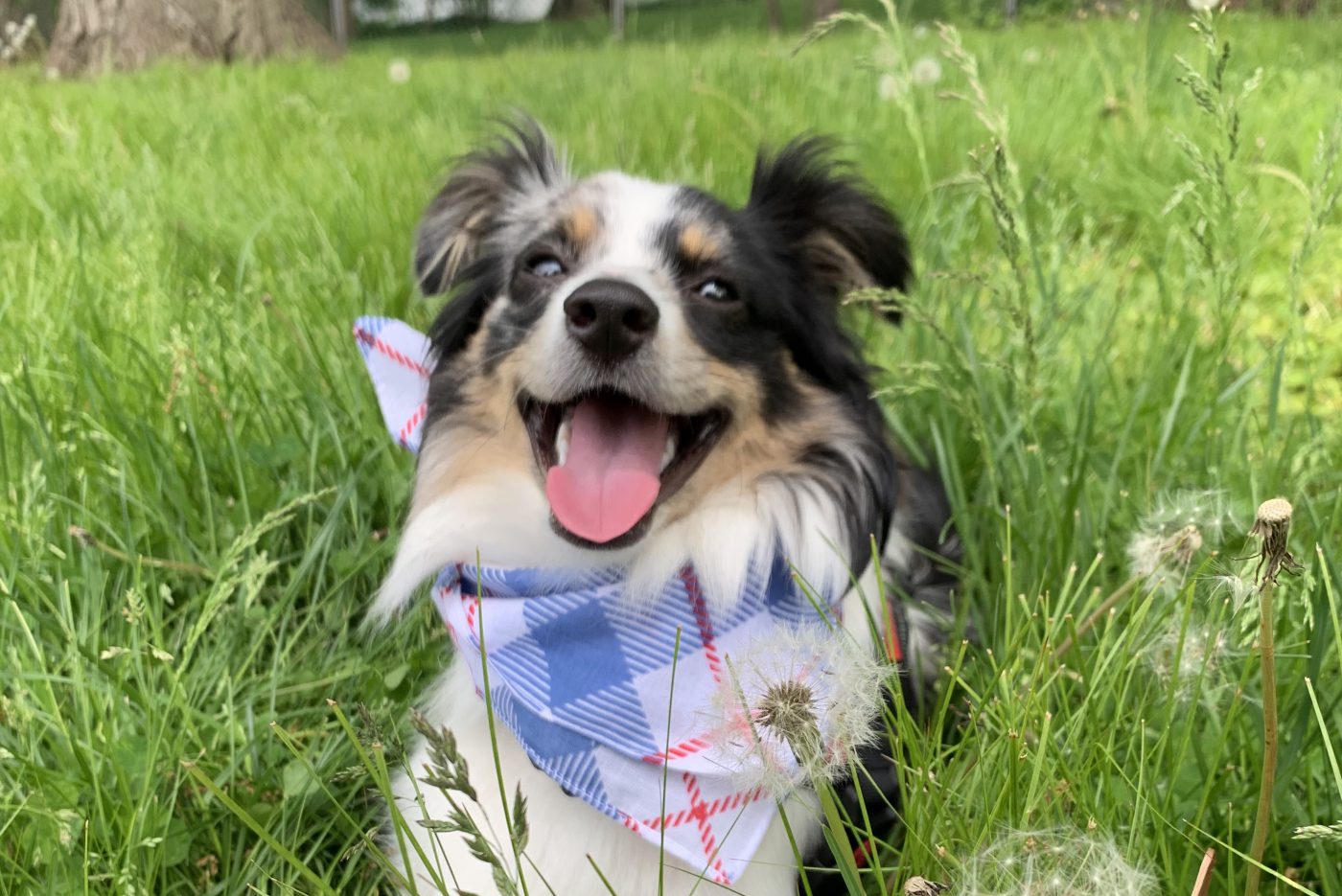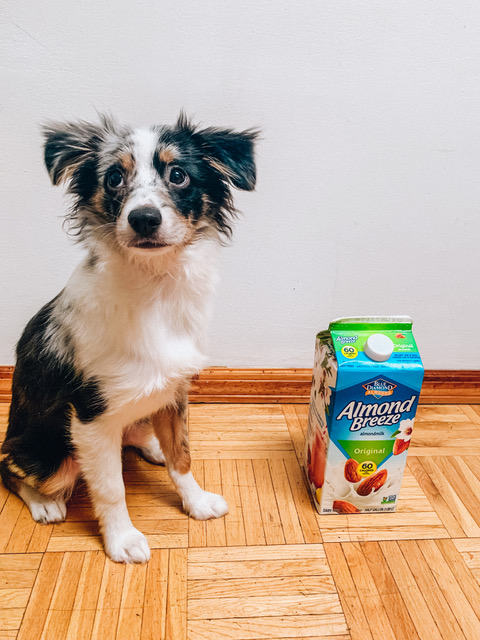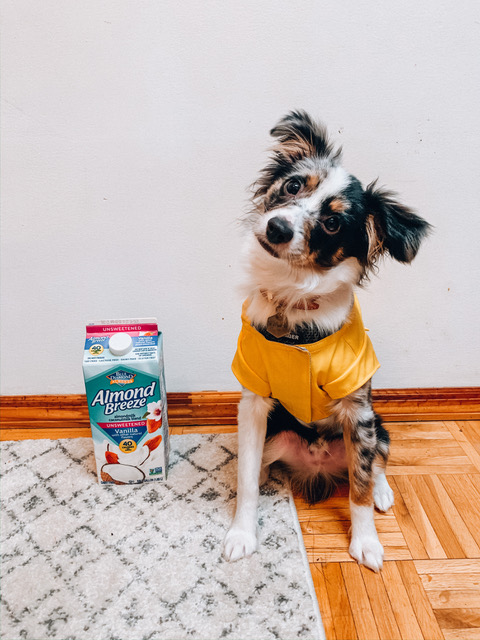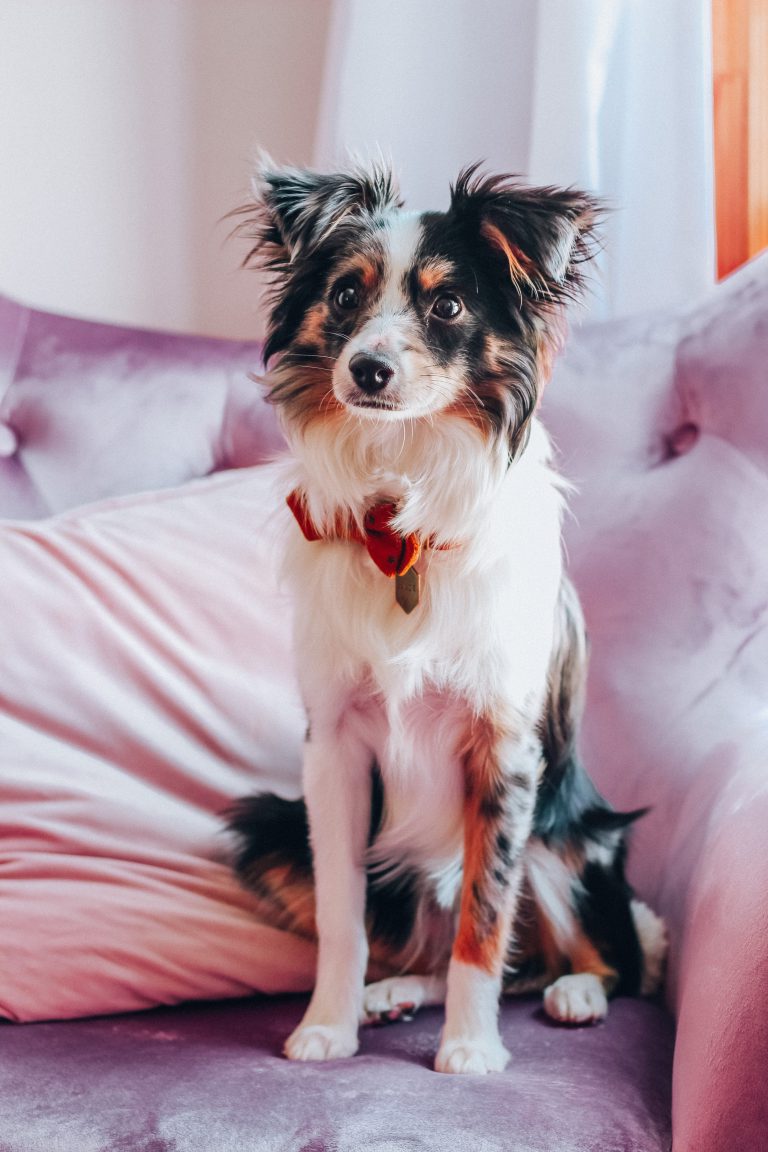We asked a new puppy owner to track the first six to eight months with their new family member, recording the milestones, the big questions and challenges along their puppy journey.
We hope this personal perspective, and the advice on dealing with real-world issues, provides some useful insight into what works and doesn’t work for training, caring for, and living happily with your pup.
Here, Bowie’s mom, Maddie, takes us through the first seven months with this little floof:
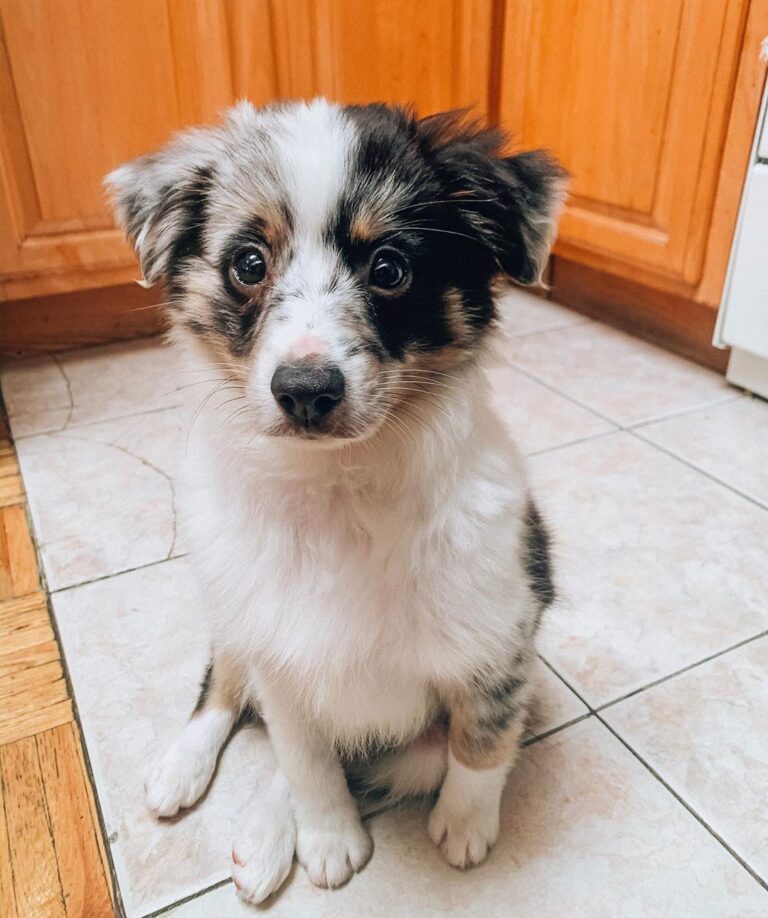
About Bowie:
He’s a toy Australian shepherd from Arkansas.
What went into your decision to get a puppy, and to choose him? Did you feel “ready,” or was it more spontaneous?
I definitely put a lot of thought into the decision and made sure it was right for me and something that I was ready for, but I do think the actual “deciding on,” and paying for my pup was a little more spontaneous. I had been looking to adopt for a while, but couldn’t find the right dog for me. I spent hours combing over websites and doing research, and when I stumbled upon Bowie it was a very quick decision.
What were the biggest things you did to prepare?
I’ve spent the last 20 or so years with dogs in my household, so I definitely think that was amazing preparation for Bowie. I knew the basics of what I needed: a crate, quality food (and I spent a TON of time looking into this), quality personal care products for my pup, etc. I also made a few fun purchases, like a puppy raincoat, because who isn’t a sucker for that kind of thing? All in all, I spent about a month in between payment and the arrival of Bowie, and that time was filled with research into crate training, behavioral training, general puppy care, and preparations like setting up his first vet appointment. We spent many hours on YouTube getting advice from trainers.
What’s your situation for daycare?
I’m really lucky to be freelance, so I’ve been able to spend the majority of my time with Bowie in our home when I’m not working. On longer days, my friends have taken him to work, or he’ll have a playdate with his puppy-cousin, Olive.
3-4 Months
The Milestones:
Bowie has FINALLY gone to the bathroom outside! He is incredibly distracted during walks, so it hasn’t been productive in the house training department. We are finally starting to break ground, but he does get confused if we take away his puppy pads. This has been VERY challenging, and we are trying to figure it out as quickly as possible.
TRAINER TIP!
Many owners use wee-wee pads to train their young puppies. It can be a matter of convenience, or they may have received advice to avoid taking their dog outside at all until they have all their vaccinations. But many trainers advise (and we agree) that wee-wee pads are not the best potty training solution.
It’s generally OK to take your dog out for a potty break as long as you avoid going to the park or being around unknown dogs who are defecating and urinating. And wee-wee pads can create problems in the long-term (see Maddie’s conclusions below!)
“One of the toughest things is that when owners wee-wee pad train their dogs they’re giving them permission to pee inside,” says Blake Rodriguez, trainer and founder of Dream Come True K9 in New York. “Then they want their dog to understand, don’t do that anymore. And that’s a really hard thing for a dog to grasp. Under six months old, (a puppy’s) sphincter muscles are weak. Unless it’s a bigger breed dog they are incapable of holding it for long periods of time. So WE have to be the ones who are going above and beyond to get them out more. You have to be a good time manager when you bring your dog back in.”
If you’ve been outside for 20 minutes or longer and they don’t go, when you get back in, it’s a good idea to avoid giving your dog the run of the house. “If they have free rein they’ll find the area where they can pee and then they go rest somewhere else,” says Rodriguez. “So one thing an owner can do is work with confinement. And one of the easiest ways to confine a do is crate training them. The key to crate training is the dog has to spend time in the crate regularly throughout the day, and not just as a punishment. If they’re spending time in the crate then they’ll TRY to hold it. You have a lot of dogs who don’t even try to hold it because they think it’s acceptable to go inside. You have to give the dog incentive to want to try harder.”
Bowie is currently teething!
TIPS ON TEETHING!
Make sure your pup has lots of toys to sink those sharp little teeth into. You can also try stuffing a food dispensing toy with your dog’s fresh food, or a banana, and freezing it. There are other commercial teething toys made to be frozen. When your pup chews these frozen treats it provides engagement while soothing and numbing sore gums.
It’s important at this stage to keep your clothes, shoes, and other belongings away from your puppy. Don’t allow your puppy to teeth on you or your clothing. Many owners are inclined to think “oh it’s just a puppy being a puppy” and let them continue, but it’s a good idea to discourage the behavior now.
His coat is noticeably incredibly soft and shiny. He had a bit of a growth spurt recently and is starting to look like more of a dog than a puppy.
Read more about keeping your pup’s coat healthy here.
Currently crate training at night and when I’m out of the house. Otherwise Bowie hangs out around the apartment during the day, or in his crate.
He is still struggling with travel anxiety. He’s gotten better going on the subway, but will vomit in the car.
TIPS FOR TRAVEL TROUBLES!
Vomiting and other negative reactions to car rides can be tricky to treat as it’s not always clear if the issue is travel anxiety or motion sickness.
If you’re just starting your puppy journey, take the opportunity to create positive associations with the car and with traveling. Have your pup sit in the car and administer treats. Start with very short trips and see how your puppy responds.
Puppies and young dogs seem more prone to car sickness and one possible reason could be that they can’t see out the window. Some experts recommend using a travel booster seat, which allows them to see outside. Cracking the window to allow in some fresh air can help too.
5 Months
Milestones:
Bowie lost three teeth in two days, and they have been falling out quickly since then! He’s teething pretty badly because of this, and is chewing on nearly everything.
We’re still working on the going-outside-thing, but Bowie has gotten much better at his house training. He loves to go on walks and meet other dogs.
Bowie loves to run around (he’s incredibly fast) and has been great at listening to commands if we’re allowing him to play.
His second coat is starting to come in! It’s super shiny, but longer and more coarse than his puppy fur.
He’s had a ton of growth spurts in the past few months where we’ve noticed his legs have grown very long, but more recently he’s been growing longer in his body.
Bowie is scheduled for his neuter surgery! He is having it done next Tuesday.
7 Months
He has CHANGED.
Physically, his coat is starting to fill out much more and his hair has gotten far longer and silkier. It’s naturally very shiny, and I don’t find that he sheds that much. He still has his baby fluff on his ears, but looks more like a full-grown pup in other ways. His body has gotten longer and more lean, and I think he’s just about done with his growing. It seems like he may just fluff out a bit more.
Overall, he’s pretty small for the average toy Aussie that we run into, but he’s not afraid to play with the big dogs at the park. He’s a little shy with people, but he LOVES other dogs and is always so incredibly friendly and eager to play. We’ve been in quarantine for the last three weeks and I notice that the need to get out and play has started to make him quite restless. My three-room apartment is a good size for him when we’re able to be out and about, but we’re trying to limit walks to once a day given the circumstances. Because of that, we’ve been using his pads, which is pushing off official house-training. I’m thinking we may start using a puzzle of some sort, but for now have been practicing hide and seek with treats, and doing routine games/training to keep him occupied.
TRAINING TIP!
The unique circumstances of the COVID-19 pandemic have created lots of challenges, and opportunities for dogs! It’s important to maintain some semblance of routine to keep your dog mentally stimulated and to stave off separation anxiety when you return to a “normal” routine. Read more about caring for your dog during this time here.
His personality has really blossomed. We always used to joke when he was a puppy that he didn’t really do anything — he was afraid of noises and was super shy with anyone other than me (his mom.) He didn’t bark for the first few weeks that I had him, but has really come into himself since then! He’s incredibly loving and playful. He loves to snuggle every morning and night, but has given up some of his more puppy-like affection, such as letting people hold him like a baby. He’s incredibly expressive, and clearly has a personality and communicates with us real well.
As for his overall health, Bowie is doing pretty well!
Some milestones:
– Getting better at “stay”
– Learning his boundaries
– Doesn’t whine at night in his crate
– Learning how to catch
Looking back, what was the biggest lesson—what did you most wish you knew?
I would definitely tell puppy parents not to incorporate puppy pads if possible. While it was great because we didn’t miss a beat after coming home (Bow was immediately trained to pads) it just made things SO much harder in terms of getting him to go to the bathroom outside in the long run. It took him a long time to transition, and while I’m thrilled that we missed late night bathroom breaks in the freezing cold, it would have been nice to avoid all of the confusion that came with having pads incorporated in our day-to-day.
Tell us a few things you’d say to prospective puppy owners.
I’m an over-preparer, so I had everything I needed when Bowie arrived. I would definitely recommend that anyone looking into getting a pup do extensive, thorough research into what your pup may need, and having all the essentials prior to your pup’s arrival. It’s 100% worth it to invest in pet insurance, and we had that from day one. Portable bowls, a leash and harness, a crate, a bed, extra poop bags, yummy treats, and healthy food are all amazing things that we have used every single day. We live in an incredible time where parenting—even for a pup—can be made so much easier with most things at the tip of our fingers. Using cell phone apps to train Bowie made puppyhood much easier, and the extensive research we did when looking into getting him made it so we knew what we could expect in terms of his needs. It’s a daunting task bringing a dog into your life, but one that has proven to be so worth it. Can’t wait until I can get him a little friend!
Read more about caring for, feeding, and training a puppy in our Puppy Guide.



